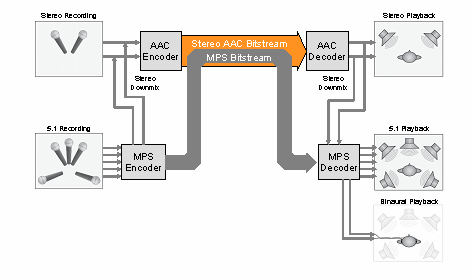There’s a German research institution that many people outside of Europe have never heard of. Well, there are probably lots of German research institutions that many people have never heard of, but this particular one, Fraunhofer, was instrumental in developing a technology that millions of people use every day—a little thing called MP3. Fraunhofer also co-developed AAC and has been involved in developing the H.264 video codec, along with other codecs. But unlike the audio algorithm experts at Dolby, whose brand is visible on home audio equipment and whose name is nearly synonymous with high-quality audio, Fraunhofer has kept a relatively low profile. That’s because it has a somewhat unusual business model and history.
Fraunhofer was founded in 1949, at a time when the German economy was suffering after World War II. Most German companies couldn’t afford to do their own research, so the German government decided to fund new research itself via Fraunhofer, which was created as a non-profit, government-subsidized research institution. The idea was that Fraunhofer would conduct the research and then hand off the results to individual companies, who would use it to develop marketable products and help drive the economy.
Today, Fraunhofer still conducts research in a broad range of areas. It develops its own codecs (often with the help of collaborators) and subsequently owns key codec-related IP. It helps to define codec standards (usually MPEG standards), and it receives license fees for the use of these codecs, which, given the popularity of MP3, has turned into a sizable chunk of revenue. However, Fraunhofer is still a non-profit company; the money it receives is reinvested into research and staff education, and the institute also helps its employees create spin-off companies such as Coding Technologies (which was subsequently acquired by Dolby).
In addition to developing the codec algorithms, Fraunhofer also creates and licenses optimized implementations for specific processing platforms. And after a codec has been finalized, Fraunhofer works towards creating industry standards that promote the widespread adoption of the new codec. For example, Fraunhofer has worked towards getting broadcasting standards updated so that they incorporate Fraunhofer codecs.
Currently Fraunhofer is focused on developing and propagating three new audio algorithms: MPEG Surround, low-delay AAC, and high-definition AAC.
MPEG Surround is a low-bitrate version of surround-sound. It was developed in collaboration with Philips and Dolby, and compresses 5.1-channel surround-sound files into the space normally used by compressed two-channel (stereo) audio files. The format can be used as an additional layer on top of several popular audio codecs (including MPEG-1 Layer II, AAC, and HE-AAC) and is fully backwards compatible with older digital stereo systems that play those codecs. Play an MPEG Surround file on an older system and you get traditional stereo sound; play it on a system equipped with MPEG Surround decoding and you get full 5.1 surround sound. The format is intended to be used in mobile TV and radio broadcasting as well as music downloads and streaming audio.
Figure 1 shows the MPEG Surround encode/decode process. In this figure it is shown being used in conjunction with AAC, though as described above it can also be used with other codecs.

Figure 1. MPEG Surround (MPS) block diagram. (Diagram courtesy of Fraunhofer.)
The third codec Fraunhofer has been busy with is high-definition AAC, or HD-AAC. This is a lossless version of AAC that Fraunhofer believes may be the key to convincing audiophiles to switch completely over from CDs to downloadable music. Important to enabling that transition is the fact that HD-AAC is fully backwards compatible with AAC; the AAC bitstream is contained within the HD-AAC bitstream. There are no HD-AAC equipped devices available yet, though Fraunhofer is currently working to establish HD-AAC as the standard format for music download services.
As the uses for digital audio and video evolve and expand, Fraunhofer continues to adapt existing codecs and create new ones to address a range of bitrates and listening conditions. Nearly 60 years after its inception, Fraunhofer is clearly in no danger of becoming obsolete—though it appears content to remain obscure.


Add new comment